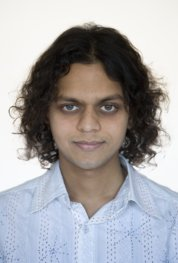Multi-color fluorescent DNA analysis in an integrated optofluidic lab on a chip
Promotion date: 25. August 2010
Promotors: Prof. dr. Markus Pollnau
Assistant Promotor: Dr. Hugo Hoekstra
| By employing lab-on-a-chip devices, integrated DNA sequencing and genetic diagnostics have become feasible. Capillary electrophoretic separation is combined with integrated-waveguide laser excitation and ultra-sensitive fluorescence detection in an optofluidic chip. In this manner, a high spatial resolution and a high sizing accuracy is demonstrated for double-stranded DNA molecules, in the diagnostically relevant size range of 150 to a thousand base-pairs. Highly sensitive fluorescence detection of DNA molecules is achieved, corresponding to merely eight molecules in the analysis volume. Subsequently, a principle of parallel optical processing is introduced to the optofluidic chip. As a proof of principle, fragments associated with genetic predispositions to breast cancer and anemia, were analyzed simultaneously. Such multiple, yet unambiguous, optical identification of biomolecules, can open new horizons for “enlightened” lab-on-a-chip devices in the future. |
In what way was the thesis research application driven?
To analyze DNA-molecules, rather big apparatus is needed. Lab-on-a-chip technology promises the creation of cheap, portable analyzers, suitable for developing countries and for field applications, I believe.
A market exists, I am sure. After twenty years of lab-on-a-chip technology developments, devices should be attainable that are cheaper, smaller and faster. Of course, enough challenges remain, for example, the integration of optical detection on a chip.
What was the central topic in your work?
In the first place, optimizing the fluidics and integrating it with optics on one substrate, we tested several optical sensors, on their measuring abilities on real people’s samples. The research was highly multidisciplinary. There was a good balance between the fundamental, exploratory character of the approach, with the experiments being strongly oriented towards application. Goal was to obtain high resolution and low detection limits, meaning that less patient-sample is needed to still be sure of the diagnostic results.
I investigated the interface between the microfluidic channel and the optical waveguides. Fluorescence was excited by the waveguides in the biochemical contents of the microfluidic channel. The excitation volume contained only eight flowing DNA molecules. Being able to detect such small amounts was beyond expectation, and set a new world record.
Was there a special moment during your thesis period that stuck to your mind?
In fact, this was at the end of the third year, when measurements were carried out regarding parallel optical processing. Using an opto-fluidic chip, we clearly and simultaneously detected two genetic deviations regarding two totally different illnesses, breast cancer and anemia, using real patient’s samples. This was a very special moment to me, and it attracted a lot of attention from scientists all over the world at international conferences.
So, some nice results were published?
Yes, five publications so far in high impact journals such as Lab-on-a-chip (cover story) and Optics Letters, Electrophoresis, while three more are underway. At the moment, I am also working on some invited reviews.
I am very honored, editors approached us to write them. It’s nice to see the highly enthusiastic response to our research results. Also, we are working on a chapter on DNA analysis in a scientific book concerning capillary electrophoresis. Besides, our work resulted in almost 25 presentations - some of them were invited talks - at international conferences.
What skills did you develop as a researcher during the thesis project?
I learned to balance theoretical and experimental work in a highly multidisciplinary project. I had to help the biochemist partners with my expertise in Optics and Electrical Engineering, but also deepened my knowledge on different, new terrains like biochemistry, genetics, microfluidics and lab-on-a-chip technology.
Luckily a lot of subject experts at MESA+ were very willing to help me out on this, as were cleanroom technicians and experts from the nanotech companies in the region. I experienced a pleasant, innovative high-tech ecosystem here in Twente.
I discovered that social impact is an important aspect of my work. I am quite sure some findings coming out of my work, will be carried further in the near future in the medical field.
Collaboration with various companies and universities in this European project, was great. Being part of a network implies one has to develop his soft skills. I learned to use my convincing abilities when needed. Working in a team requires leadership abilities also: planning the project, making sure deadlines will be kept, and delivering quality research at the end.
What are your future plans?
Right now, I have definite offers from Philips, ASML and Unilever, as well as a number of SMEs. After nine fulfilling years in academics, I would like to move to the world of industrial R&D. With my multidisciplinary background, flexibility, and soft skills I am confident of success.
Will I return to academic research in the long run? Maybe. If real applications are within reach, if collaboration with companies is part of the job and if entrepreneurship is encouraged. One reason could also be that I like to teach and to interact with young people full of fresh, bright ideas.
I like my life in Holland. I speak Dutch fluently and feel quite well integrated. The open, international, flexible, informal, pragmatic, efficient, and innovative culture here is quite unique and suits me very well. Even the very direct way of conversation between people, I highly appreciate.

